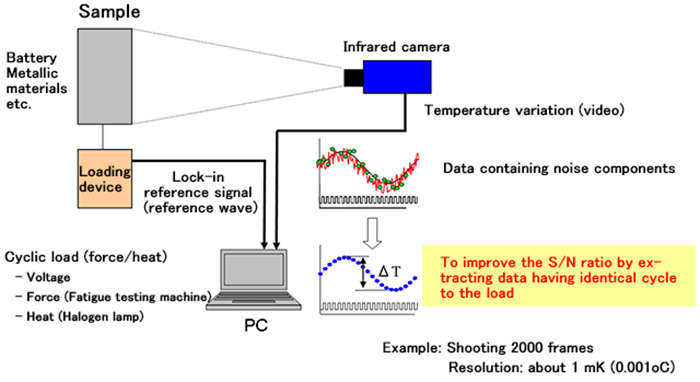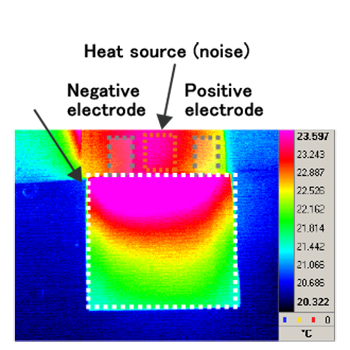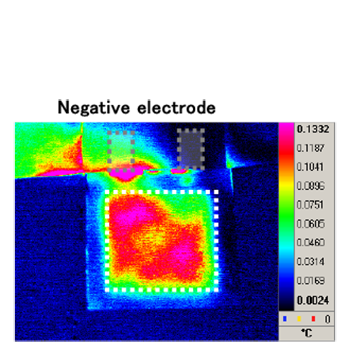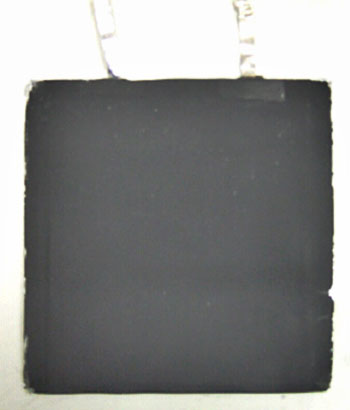Thermography (Infrared Camera Application Technology)
Infrared Thermal Analysis Using the Lock-in Method
In-page menu
JFE-TEC provides highly sensitive thermal analysis technology using the lock-in method
Small temperature variations can be measured by applying signal processing technology with the lock-in method for temperature images (videos) from an infrared camera by applying a load (by voltage, etc.) repeatedly to the object to be measured.
Sensitivity of high performance infrared cameras is very high where the NETD (temperature resolution) per frame of images is 0.02oC. Furthermore, temperature resolution can be improved to 0.001oC using the lock-in method. This process is effective for small temperature variations and heat generation measurements.
This technology is useful for product defect analysis and thermal design through wiring defect detection of LSI or printed circuit boards and heat analysis of batteries.

Lock-in Method
The lock-in method is a signal processing technique to improve S/N ratio by measuring temperature variations in a sample to which a load (by voltage or force) is repeatedly applied. The process then involves extracting only the temperature variations with cycles identical to the cycle of the sample (lock-in reference signals) from the time-series data. (Fig. 1)
Since the temperature resolution is 0.001oC or higher using the lock-in method after shooting 2000 frames or more, small temperature variations or heat generation can be analyzed.

Thermal Distribution Measurement of Lithium-Ion Battery
Fig. 2 shows the result of changes in temperature in a prototype lithium-ion battery developed in our Battery Material Analysis and Evaluation Center when analyzed with the lock-in method.
In the thermal image (a), thermal distribution from the heat generated in the battery cannot be recognized due to noise from external heat sources.
On the other hand, the distribution (temperature difference distribution) of heat generated in the battery itself can be confirmed in the temperature difference image with the lock-in method (b).
This temperature difference distribution reflects the status of heat generated in the battery, and variations in the thermal distribution in the charging-discharging cycle are captured for analysis.
-

(a) Thermal image -

(b) Temperature difference image with the lock-in method -

(c) Appearance of the lithium-ion battery
Fig. 2 Example of thermal analysis of a lithium-ion battery at the time of charging/discharging


